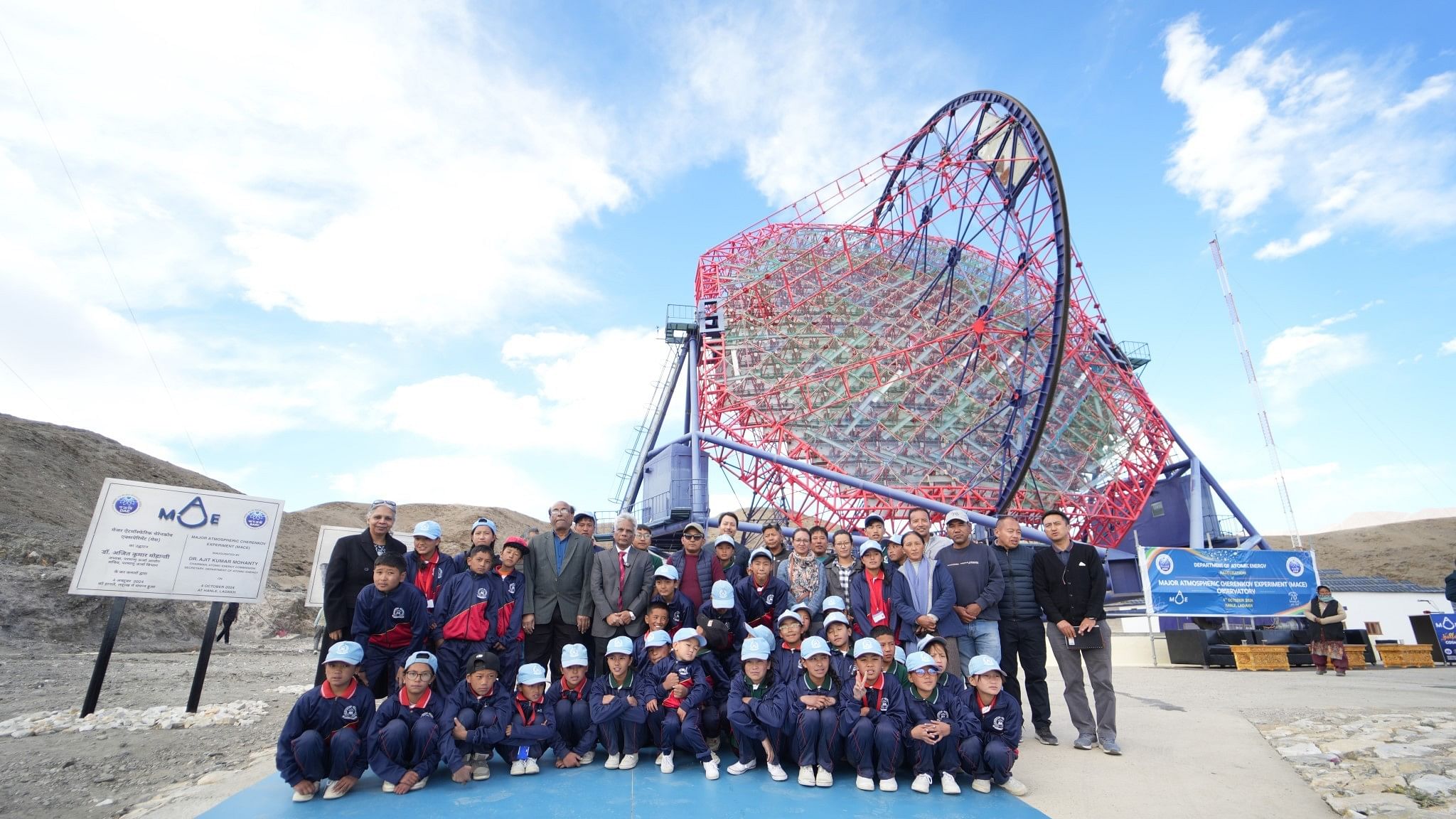
The MACE was inaugurated by Dr. Ajit Kumar Mohanty, Secretary, Department of Atomic Energy and Chairman, Atomic Energy Commission.
Credit: X/@DAEIndia
Mumbai: The Major Atmospheric Cherenkov Experiment (MACE) Observatory has been inaugurated in Hanle in Ladakh.
The inauguration of the MACE telescope marks a significant step forward for Indian astrophysics and cosmic-ray research.
MACE is the largest imaging Cherenkov telescope in Asia.
Located at an altitude of around 4,300 mts, it is also the highest of its kind in the world.
The MACE telescope will observe high-energy gamma rays, contributing to global efforts to understand the most energetic phenomena in the universe, such as supernovae, black holes, and gamma-ray bursts. This facility will also complement global observatories, strengthening India’s position in the field of multi messenger astronomy.
Looking ahead, the MACE project aims to foster international collaborations, advancing India’s contributions to space research and bolstering India’s position in the global scientific community.
The observatory will also serve as a beacon of inspiration for future generations of Indian scientists, encouraging them to explore new frontiers in astrophysics.
The MACE was inaugurated by Dr. Ajit Kumar Mohanty, Secretary, Department of Atomic Energy and Chairman, Atomic Energy Commission.
The telescope is indigenously built by Bhabha Atomic Research Centre (BARC) with support from Electronics Corporation of India Limited (ECIL) and other Indian industry partners.
The inauguration of MACE Observatory was a part of the Platinum Jubilee year celebrations of the DAE.
Dr. Mohanty applauded the collective effort that brought the MACE telescope to fruition.
He stated that the MACE Observatory is a monumental achievement for India, and it places our nation at the forefront of cosmic-ray research globally.
Dr. Mohanty also paid tribute to India’s pioneering contributions to the field, including the work of Dr. Homi J. Bhabha, whose legacy continues to inspire India’s cosmic-ray research.
Ajay Ramesh Sule, Additional Secretary, DAE, stressed the importance of balancing tourism and scientific activities within the Hanle Dark Sky Reserve (HDSR) and encouraged students to pursue careers in science and technology.
Dr. Annapurni Subramaniam, Director, Indian Institute of Astrophysics (IIA), highlighted the fruitful collaborative efforts between several constituent units of DAE and the IIA.
Sajjad Hussain Mufti, Chief Conservator of Forests, Ladakh, outlined the key features of the Hanle Dark Sky Reserve and the focus on community engagement. He reaffirmed the UT administration’s unwavering commitment to supporting DAE’s scientific activities.
Dr. S. M. Yusuf, Director, Physics Group, BARC, emphasized the importance of the MACE telescope in advancing India’s space and cosmic-ray research capabilities.
The vote of thanks was delivered by Dr. K. K. Yadav, Head of Astrophysical Sciences Division of BARC, followed by a visit to the state-of-the-art MACE Control Room.
A pictorial compilation documenting the journey of the MACE project was also released on the occasion.
Dr. Mohanty felicitated the representatives of the Nambardars (village leaders), the school headmaster, and the venerable Lama of the Handle Gompa.